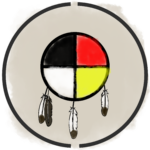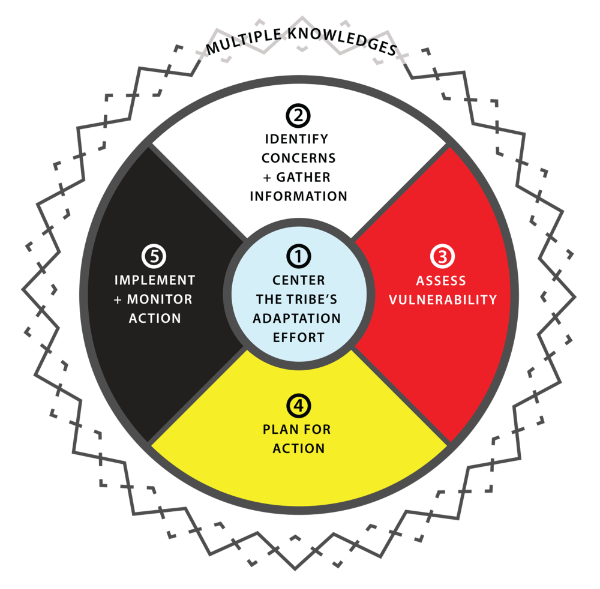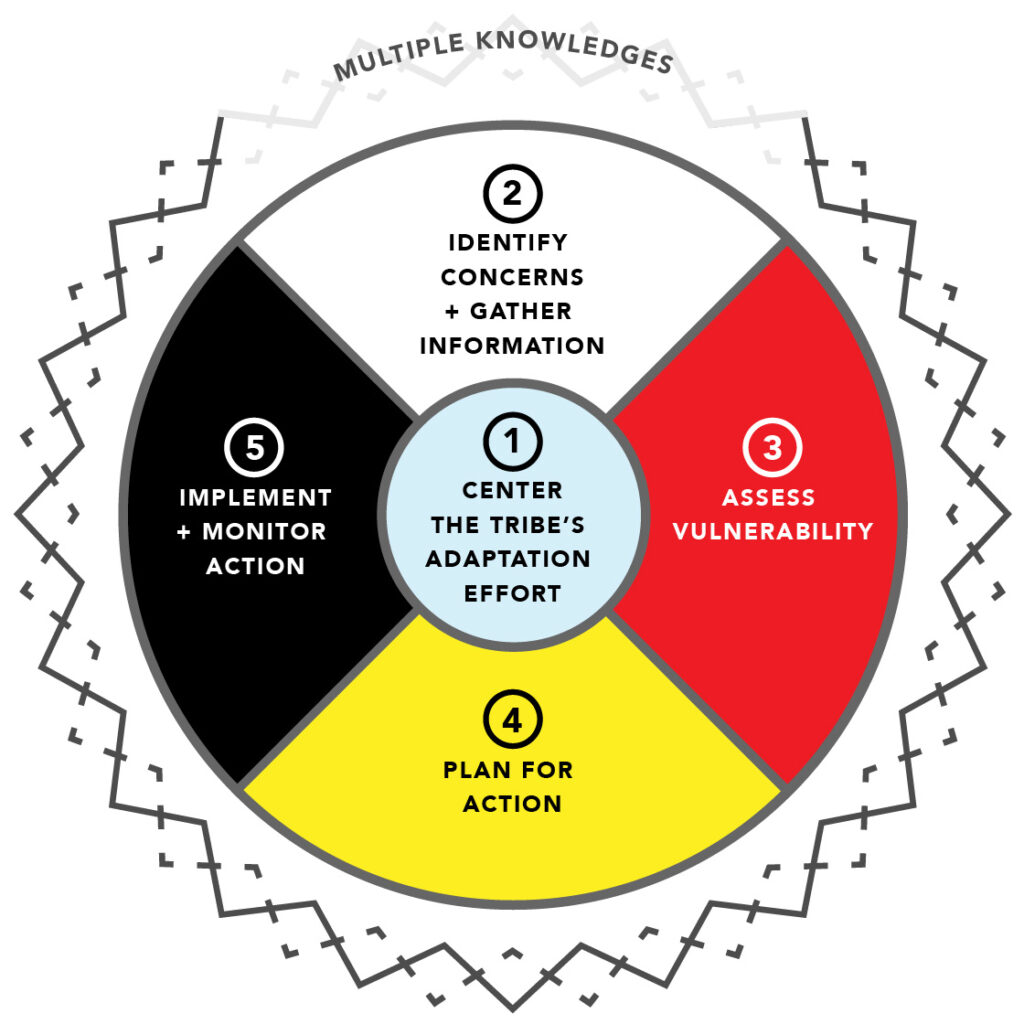Step 5: Implement & Monitor Action
Begin to implement and monitor adaptation actions now and over time.
Step 5 Content
Click the icon above (or scroll lower on the page) to directly access the main Step content.
Step 5 Checklist
Click the icon above to download an easy-to-use checklist to use while working through Step 5.
Step 5 tribal Examples
Click the icon above to see examples from Tribal climate initiatives across the US specific to Step 5.
Activity 1: TaKe Action
Start by implementing actions that have the fewest barriers, the highest chance of success, and the greatest resilience value.
“There is a lot of controversy around climate change, but the bottom line is that it’s a reality.”

Guiding Questions
Helpful questions to consider during this activity.

Traditional Knowledges
Considerations for integrating and protecting
Traditional Knowledges during this activity.
Activity 2: MONITOR & EVALUATE ACTIONS
Evaluate the success of adaptation actions and modify actions over time to improve their effectiveness.
“The scientific evidence of climate change is increasingly abundant and convincing … Given the geographic location and characteristics of the Swinomish Indian Reservation, climate change impacts on the Reservation community are perceived to potentially be both significant and long-term.”

Guiding Questions
Helpful questions to consider during this activity.

Traditional Knowledges
Considerations for integrating and protecting
Traditional Knowledges during this activity.
Community Engagement Checkpoint
Sustain community engagement and support for implementing adaptation actions over time.
Documentation Checkpoint
Consider documenting the suite of indicators the Tribe selects as well as the process for collecting, consolidating, and reporting information on those selected indicators.
Activity 3: COMPILE EVErYTHING
Document the Tribe’s adaptation work in a manner that will facilitate long-term success of building climate resilience.
“The Karuk Tribe values the interests and wellbeing of the Karuk People. The values associated with this wellbeing are primarily health, justice, economic security, education, housing, self-governance, as well as the management and utilization of cultural/natural resources within and adjacent to the Karuk Aboriginal Territory now and forever.”

Guiding Questions
Helpful questions to consider during this activity.

Traditional Knowledges
Considerations for integrating and protecting
Traditional Knowledges during this activity.
Activity 4: CONTINUE BUILDING RESILIENCE
Tribes’ history of fostering long-term social and ecological resilience creates an excellent foundation for continuing to build resilience. Establish a process the Tribe can use over time as changes occur to: update the plans; refine or expand the actions; and continue to adapt.
“The Blackfeet (Amskapi Piikani) have long believed that we are the caretakers of the land and resources where we have resided for many thousands of years. To this day, we use this land for spiritual and cultural purposes. The Blackfeet Nation strives hard to retain its culture in this modern era where impacts to our world are changing, and that we recognize we must adapt and [our adaptation plan] will help guide us in that endeavor.”

Guiding Questions
Helpful questions to consider during this activity.

Traditional Knowledges
Considerations for integrating and protecting
Traditional Knowledges during this activity.







